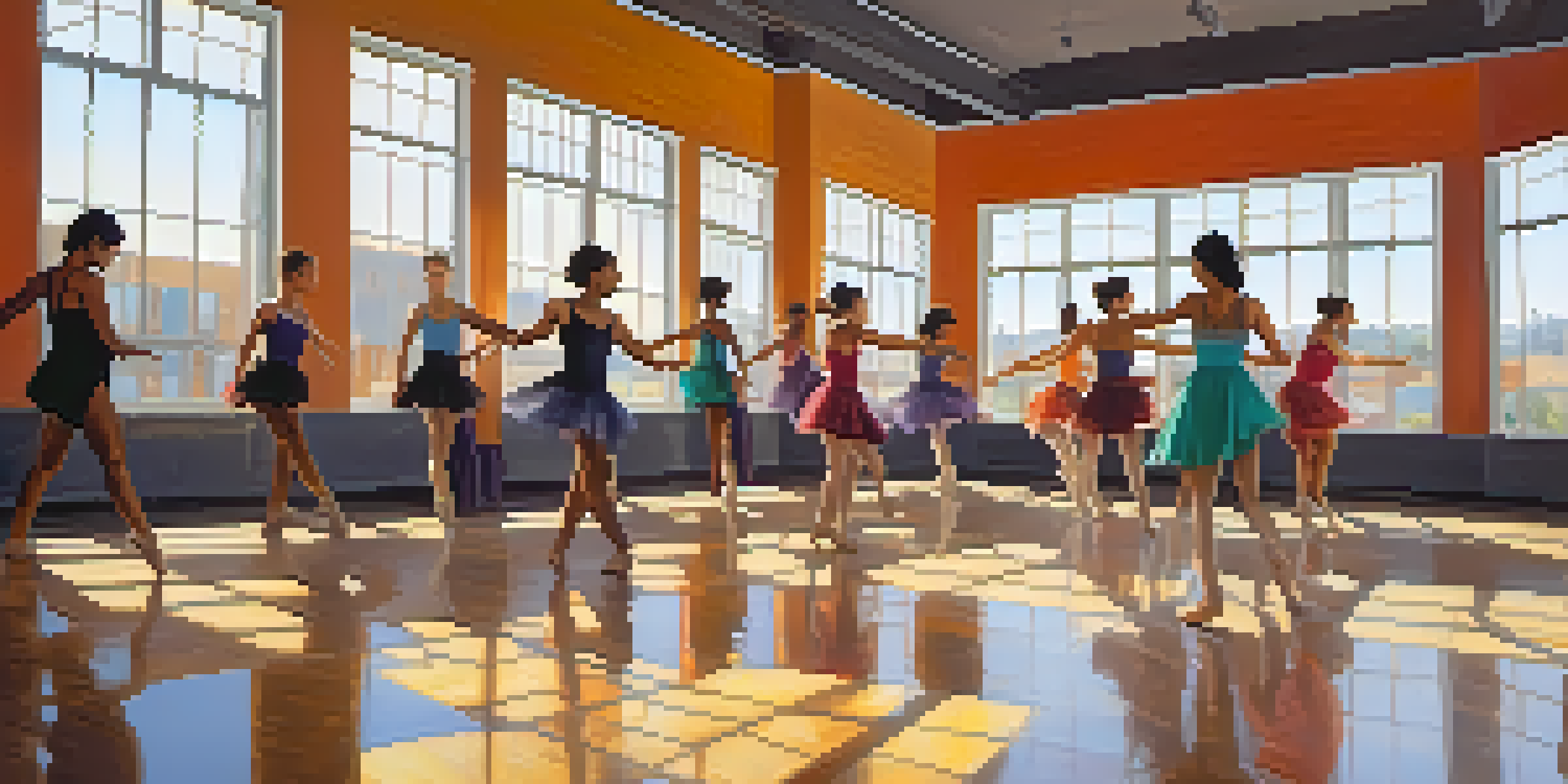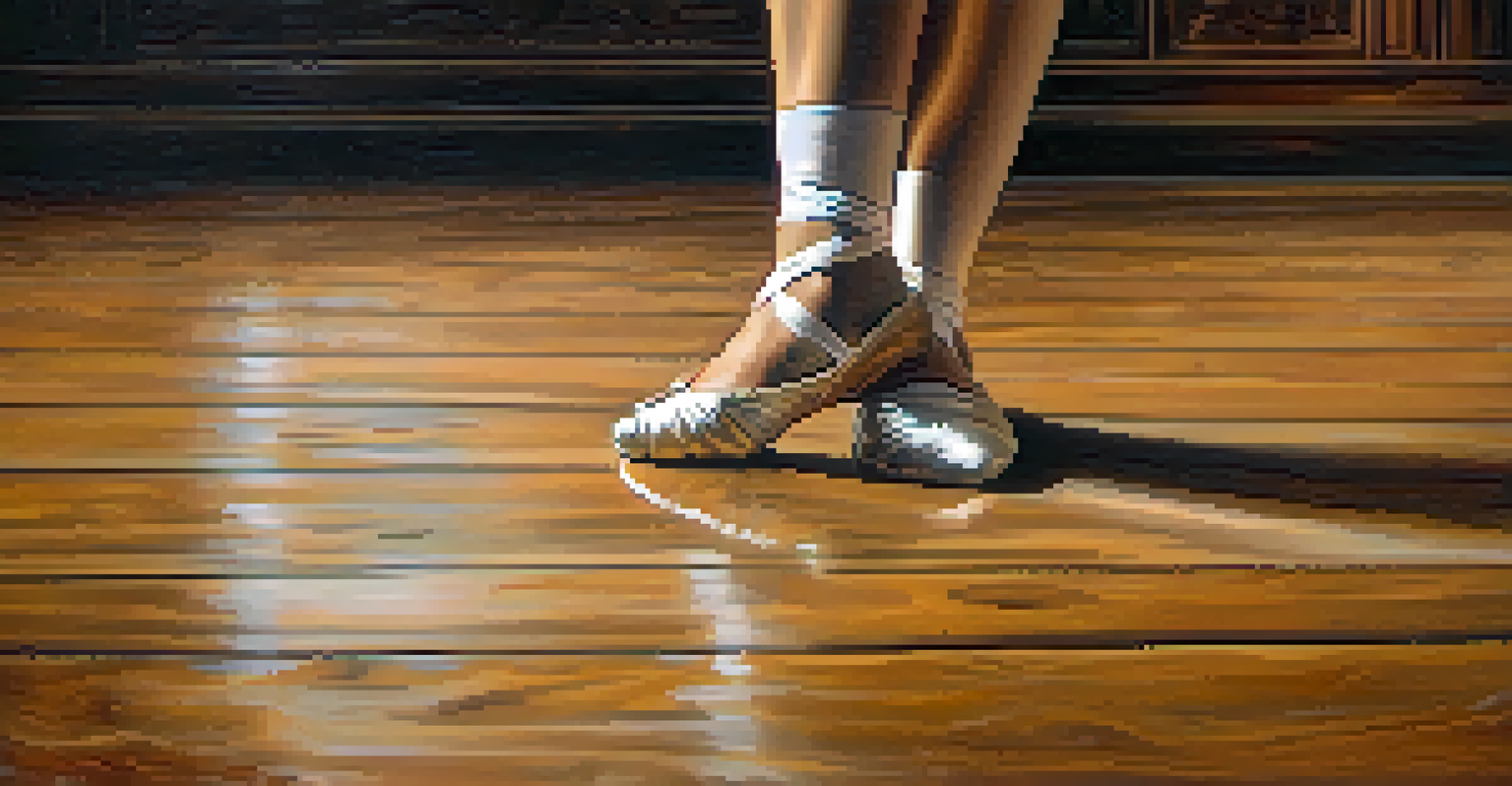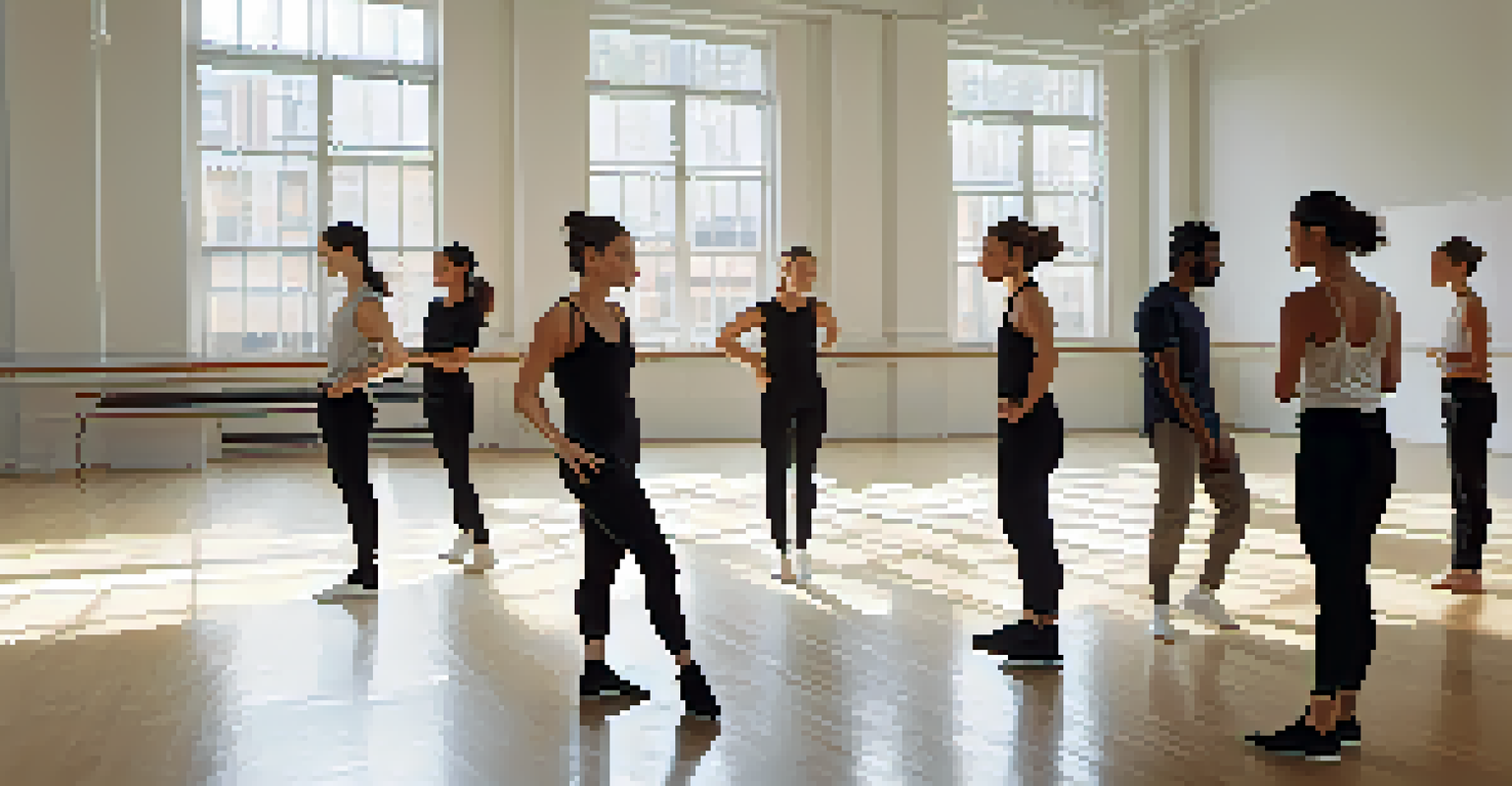Challenges in Dance Notation: Issues and Solutions Discussed

Understanding Dance Notation and Its Importance
Dance notation is a system used to visually represent dance movements on paper. Just like musical notation helps musicians understand how to play a piece, dance notation allows dancers to learn and preserve choreography. It serves as a crucial tool for choreographers and dance educators, ensuring that their work can be passed down through generations.
Dance is the hidden language of the soul.
However, the intricacies of human movement can make notating dance quite challenging. Each dancer has a unique style, and capturing the nuances of their movements can be difficult. This complexity can lead to misinterpretation or a loss of the original intent of the choreography, which is a significant concern within the dance community.
Despite these challenges, effective notation can enhance communication among dancers and choreographers. It provides a common language that can bridge cultural and stylistic gaps. Understanding and addressing the issues in dance notation not only helps in preserving dance but also enriches the art form itself.
Common Challenges Faced in Dance Notation
One of the primary challenges in dance notation is the subjective nature of movement. Different dancers may interpret the same choreography in various ways, which can complicate the notation process. This subjectivity can lead to discrepancies in how a dance piece is performed, making it difficult to maintain consistency across different performances.

Moreover, traditional notation systems often struggle to capture the full range of physical dynamics and emotional expressions. For instance, how do you notate a dancer's breath or the subtle shifts in weight that convey intention? These elements are crucial to the storytelling aspect of dance but can be easily overlooked in standard notation.
Importance of Dance Notation
Dance notation serves as a crucial tool for preserving choreography and enhancing communication among dancers and choreographers.
Lastly, there is the issue of accessibility. Many dancers and choreographers may not be trained in reading traditional notation, which can create barriers to learning and collaboration. As a result, some innovative techniques and styles may not be documented, risking their disappearance over time.
Technological Advances in Dance Notation
With the advent of technology, new tools are emerging to address the challenges of dance notation. Software applications designed specifically for notating dance movements are making it easier for choreographers to create and share their work. These digital platforms often include visual and audio elements, enhancing the understanding of choreography.
To watch us dance is to hear our hearts speak.
Additionally, video recording technology allows for a more intuitive way to document dance. By capturing the movement in real-time, choreographers can create a visual reference that complements traditional notation. This approach not only preserves the choreography but also provides context for the emotions and intentions behind the movements.
Despite these advancements, it's essential to remember that technology should enhance, not replace, traditional notation methods. A hybrid approach that combines both digital tools and established notational systems may lead to a more comprehensive understanding of dance, allowing for greater creativity and innovation.
Cultural Differences in Dance Notation Practices
Dance is a global art form, and different cultures have their unique approaches to movement and notation. This diversity can create challenges when trying to standardize dance notation across various styles. What works for ballet may not be effective for hip-hop or contemporary dance, highlighting the need for adaptable systems.
Moreover, cultural differences can influence how movements are interpreted and notated. For instance, a gesture that holds significant meaning in one culture might not translate the same way in another. This can lead to misunderstandings and misrepresentations in dance notation, which can affect the integrity of the choreography.
Challenges in Notation Practices
Subjectivity in movement interpretation and a lack of accessibility can hinder effective dance notation, risking the loss of innovative styles.
To overcome these cultural challenges, collaboration among dancers and choreographers from different backgrounds is essential. By sharing knowledge and techniques, they can develop more inclusive notational systems that respect and represent a wider array of dance styles, ultimately enriching the art form.
Educational Gaps in Dance Notation Training
Another significant challenge is the lack of formal education in dance notation for many dancers and choreographers. While dance training often focuses on physical technique and performance, the theoretical aspects, like notation, are frequently overlooked. This gap can hinder dancers' ability to document and communicate their work effectively.
Incorporating notation training into dance education could enhance students' understanding of choreography and improve their versatility as artists. By learning various notational systems, dancers can better appreciate the intricacies of different styles and enhance their creative expression. This foundational knowledge can empower them to contribute to the preservation and evolution of dance.
Furthermore, providing resources and workshops on dance notation can help bridge this educational gap. By fostering an environment where notation is valued and understood, the dance community can cultivate a generation of artists who are well-equipped to document and innovate within their craft.
The Role of Collaboration in Solving Notation Challenges
Collaboration among dancers, choreographers, and notation specialists is key to addressing the challenges in dance notation. By working together, these individuals can share insights and develop more effective notational systems that reflect the complexities of human movement. This teamwork can also lead to the creation of a rich repository of documented choreography that honors diverse styles.
Additionally, collaborative projects can help raise awareness of the importance of notation within the dance community. By showcasing successful examples of notation in action, dancers and choreographers may be more inclined to embrace these practices in their work. This collective effort can ultimately contribute to a more cohesive understanding of dance as an art form.
Future of Dance Notation
Embracing technology and collaboration can lead to innovative notational systems that enhance the documentation and understanding of dance.
Moreover, fostering a culture of collaboration can encourage experimentation and innovation in dance notation. As artists share their unique perspectives and approaches, they can inspire one another to explore new ways of documenting movement. This synergy not only enhances the quality of notation but also enriches the overall dance experience.
Looking Ahead: The Future of Dance Notation
As we look to the future, it's clear that dance notation will continue to evolve. With advancements in technology and a growing recognition of the importance of documentation, the potential for innovative notation systems is vast. By embracing change and remaining open to new ideas, the dance community can adapt to the ever-shifting landscape of movement.
Moreover, integrating interdisciplinary approaches can enrich the future of dance notation. Collaborating with fields such as technology, education, and even psychology can lead to the creation of more holistic notational systems that address various aspects of dance. This cross-pollination of ideas can ultimately enhance the way we document and understand movement.

In conclusion, while challenges in dance notation exist, the potential for growth and improvement is significant. By addressing these issues through collaboration, education, and innovation, we can ensure that the rich tapestry of dance continues to be preserved and celebrated for generations to come.